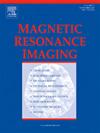Evaluating the added value of multiparametric functional MRI in predicting renal function response to renal artery stenting in severe atherosclerotic renal artery stenosis
IF 2.1
4区 医学
Q2 RADIOLOGY, NUCLEAR MEDICINE & MEDICAL IMAGING
引用次数: 0
Abstract
Objective
To explore the potential of Intravoxel Incoherent Motion Diffusion (IVIM) and Arterial Spin Labeling (ASL) in predicting the short-term effectiveness of post-revascularization for severe atherosclerotic renal artery stenosis.
Material and methods
A retrospective analysis of 88 cases from October 2018 to February 2023 was conducted. Patients were divided into Responder and Non-Responder groups based on renal function outcomes at their last follow-up. Clinical data were compared between the groups, and preoperative functional MRI images were analyzed. ROIs were outlined for the affected and both kidneys. Measurements included ASL-derived renal blood flow (RBF), IVIM's pseudo-diffusion coefficient (D*), perfusion fraction (f), true diffusion coefficient (D), and the conventional apparent diffusion coefficient (ADC).Multivariate logistic regression identified independent clinical predictors of benefit, and a clinical prediction model was developed. Model performance was assessed using Receiver Operating Characteristic (ROC) curves and Decision Curve Analysis(DCA) curves.
Results
In the training cohort of 54 non-responders and 34 responders, no quantitative parameters of bilateral kidneys showed statistical significance in predicting Responders (all p > 0.05). Pre-treatment eGFR, presence of diabetes, and the D value of the affected kidney were identified as independent factors for predicting short-term treatment effectiveness. The combined clinical-functional imaging model yielded a higher AUC at 0.796 (95 % CI: 0.690–0.897). Decision curve analysis further confirmed the better net benefit of combined model.
Conclusion
Beyond clinical characteristics, functional MRI had the potential to predict response of stenting for severe atherosclerotic renal artery stenosis.
评价多参数功能MRI在预测严重动脉粥样硬化性肾动脉狭窄患者肾动脉支架置入术后肾功能反应中的附加价值。
目的:探讨体素内非相干运动扩散(IVIM)和动脉自旋标记(ASL)在预测严重动脉粥样硬化性肾动脉狭窄患者血运重建术后短期疗效中的潜力。材料与方法:对2018年10月至2023年2月88例患者进行回顾性分析。根据最后一次随访时的肾功能结果,将患者分为有反应组和无反应组。比较两组患者的临床资料,分析术前功能MRI图像。列出受影响肾脏和双肾的roi。测量包括asl源性肾血流量(RBF)、IVIM伪扩散系数(D*)、灌注分数(f)、真扩散系数(D)和常规表观扩散系数(ADC)。多因素logistic回归确定了独立的临床获益预测因子,并建立了临床预测模型。采用受试者工作特征(ROC)曲线和决策曲线分析(DCA)曲线评估模型的性能。结果:在54例无应答者和34例应答者的训练队列中,双侧肾脏的定量参数对应答者的预测均无统计学意义(p均为 > 0.05)。治疗前eGFR、糖尿病的存在和受影响肾脏的D值被确定为预测短期治疗效果的独立因素。联合临床功能成像模型的AUC较高,为0.796(95 % CI: 0.690-0.897)。决策曲线分析进一步证实了组合模型具有更好的净效益。结论:除临床特征外,功能性MRI有可能预测严重动脉粥样硬化性肾动脉狭窄的支架置入术疗效。
本文章由计算机程序翻译,如有差异,请以英文原文为准。
求助全文
约1分钟内获得全文
求助全文
来源期刊

Magnetic resonance imaging
医学-核医学
CiteScore
4.70
自引率
4.00%
发文量
194
审稿时长
83 days
期刊介绍:
Magnetic Resonance Imaging (MRI) is the first international multidisciplinary journal encompassing physical, life, and clinical science investigations as they relate to the development and use of magnetic resonance imaging. MRI is dedicated to both basic research, technological innovation and applications, providing a single forum for communication among radiologists, physicists, chemists, biochemists, biologists, engineers, internists, pathologists, physiologists, computer scientists, and mathematicians.
 求助内容:
求助内容: 应助结果提醒方式:
应助结果提醒方式:


